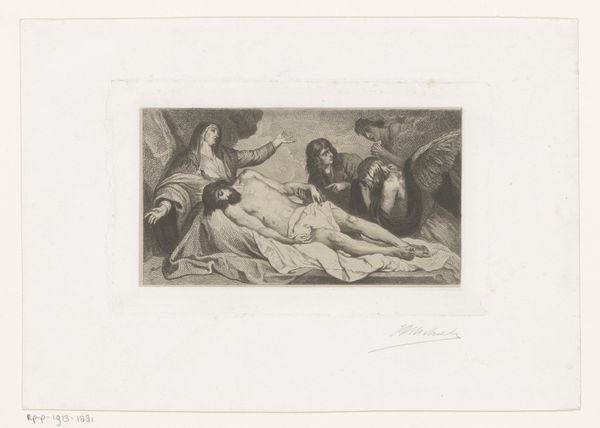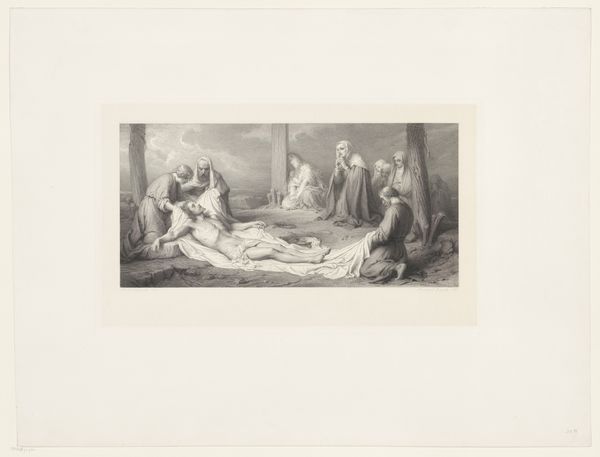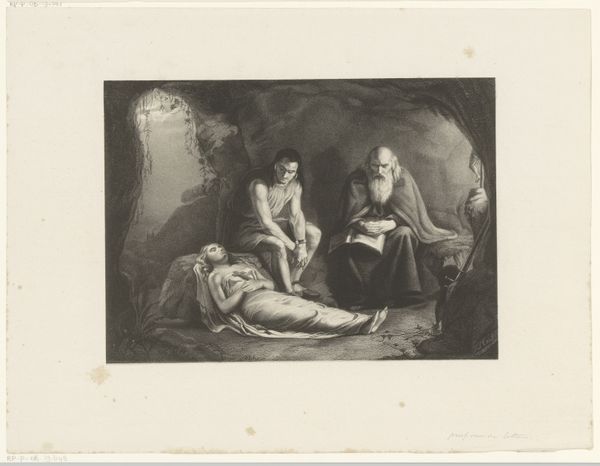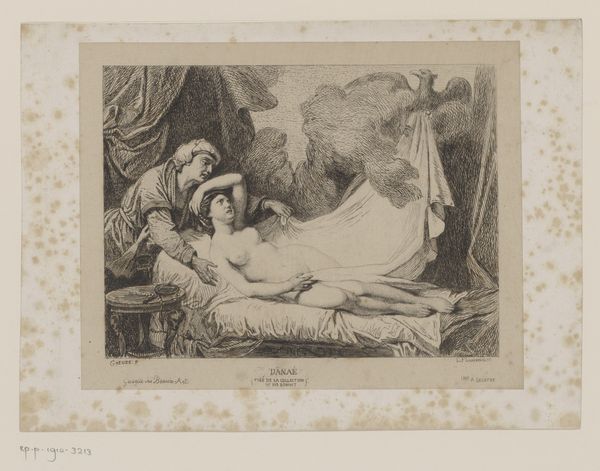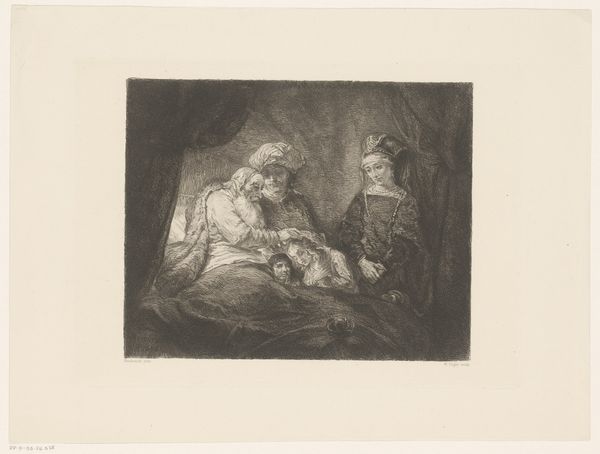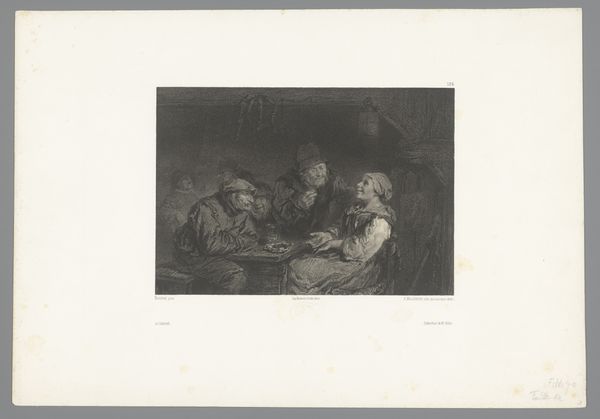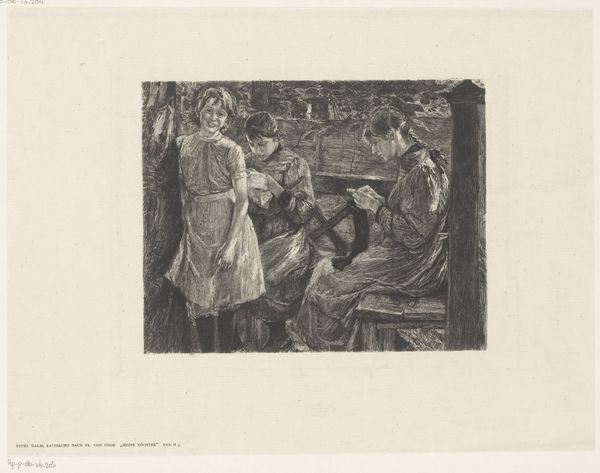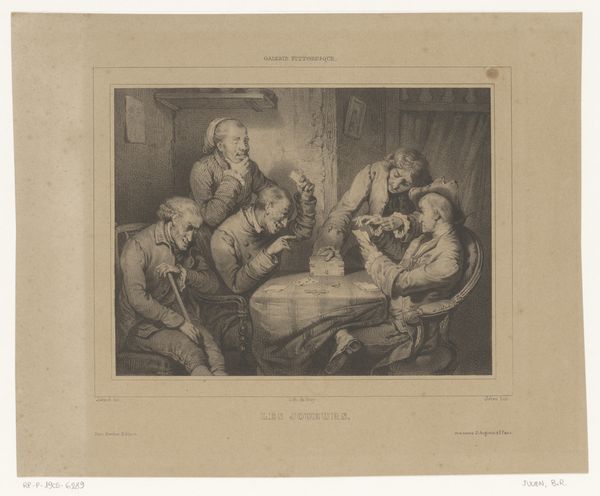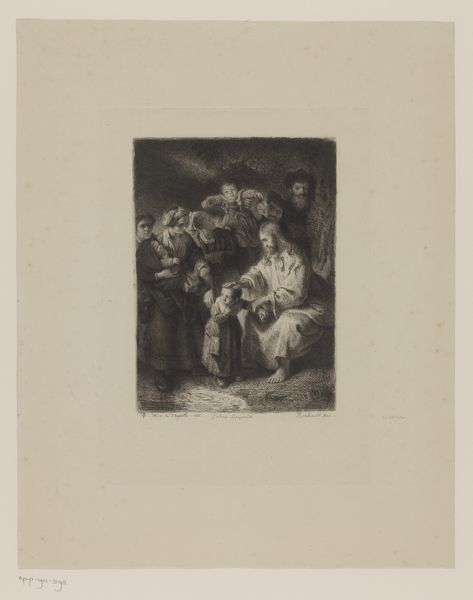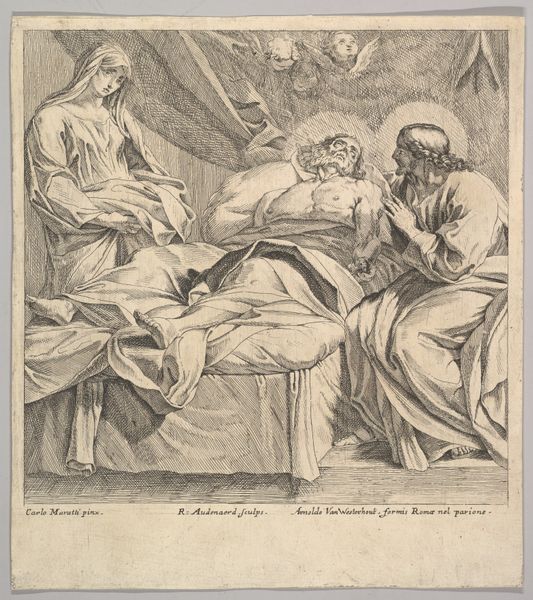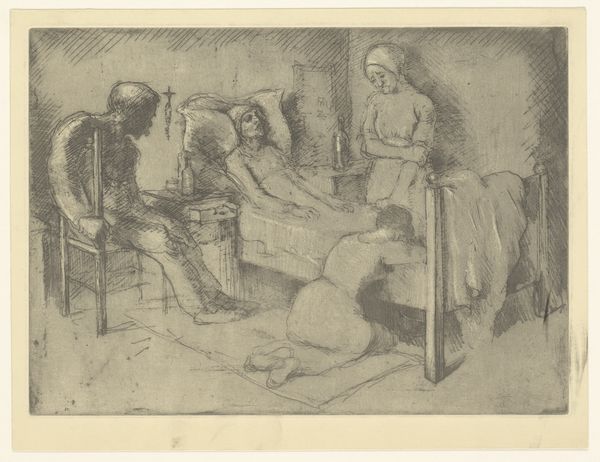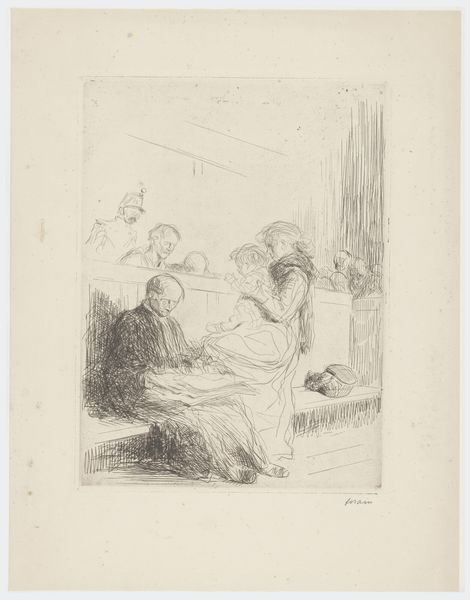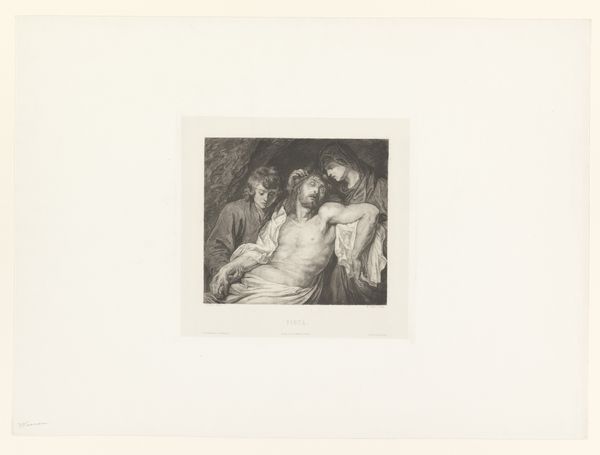
Dimensions: height 91 mm, width 112 mm
Copyright: Rijks Museum: Open Domain
Editor: So, here we have Carl Bloch's "The Entombment of Christ," an engraving from 1880. It feels incredibly solemn; the etching lines create a somber mood. There's so much raw emotion in the figures surrounding Christ. What symbols or deeper meanings do you see embedded in this scene? Curator: Look at how Bloch has positioned the body, shrouded yet vulnerable. The linen isn’t merely fabric, but a powerful symbol of ritual cleansing, reminiscent of earlier depictions of death. Consider the faces - grief isn't just displayed; it is communicated through very specific angles of heads, the wringing of hands, connecting this particular moment to centuries of visual lament. Editor: It’s fascinating how much emotional weight is carried by something as simple as the angle of someone's head! Why do you think Bloch chose to create this as an engraving, and in this style, so late in the 19th century? Curator: Engravings have an association with permanence and historical record, even when photography emerged. Think about it – what other medium could so directly connect Bloch to masters of the Northern Renaissance like Dürer, yet still feel incredibly modern in its raw emotionality? He harnesses the tradition of depicting somber moments, transforming them into a relatable image. Observe that subtle light near the tomb entrance... Editor: So it's not just the story being depicted, but also the *way* it's depicted, echoing earlier traditions and their associations. I never thought about that before, how a medium itself holds memory! Curator: Precisely! We, the viewers, are participating in that tradition by looking at this. Considering Bloch's religious convictions helps connect his work, through shared experiences and interpretations. What do you take away now? Editor: I understand the artwork's visual cues act almost like cultural keys to unlocking its profound emotion and spiritual relevance across centuries. Curator: Yes, the symbolic weight here builds across time and perception.
Comments
No comments
Be the first to comment and join the conversation on the ultimate creative platform.
